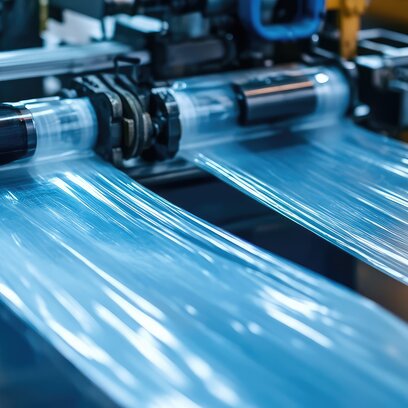In Polyethylene (PE), calcium carbonate acts as a filler and reinforcing agent, improving stiffness and rigidity. It is commonly used in applications such as films, sheets, and extrusion coatings. For instance, in blown films, calcium carbonate enhances thermal conductivity, allowing for faster cooling and improved productivity.
It also reduces the density of the composite material, making it lighter while maintaining volume. Additionally, calcium carbonate improves the opacity and whiteness of PE formulations, which is beneficial for packaging applications.
Polypropylene (PP): In PP, calcium carbonate is used to increase stiffness, reduce shrinkage, and improve dimensional stability.
It is widely used in automotive parts, such as bumpers and dashboards, where enhanced rigidity and impact resistance are crucial.
In packaging, calcium carbonate-filled PP provides lightweight yet durable solutions for containers and bottles.
The addition of calcium carbonate also improves the heat resistance and barrier properties of PP, making it suitable for various industrial applications.
The particle size distribution of calcium carbonate is a critical factor influencing its performance in plastics.
Fine particles (typically less than 1 micron) are preferred for applications requiring a smooth surface finish and high opacity.
Coarser particles (up to 10 microns) are used in applications where cost reduction and improved mechanical properties are prioritized.
The optimal particle size distribution ensures uniform dispersion within the polymer matrix, enhancing the overall properties of the composite material.
Surface treatment of calcium carbonate is essential to improve its compatibility with polymer resins. Common treatments include stearic acid coating, which enhances the hydrophobicity of calcium carbonate, improving its dispersion in non-polar polymers like PE and PP.
Silane coupling agents are also used to enhance the bonding between calcium carbonate and the polymer matrix, resulting in improved mechanical properties and durability.
Proper surface treatment ensures better adhesion, reduced moisture absorption, and enhanced processing stability.
